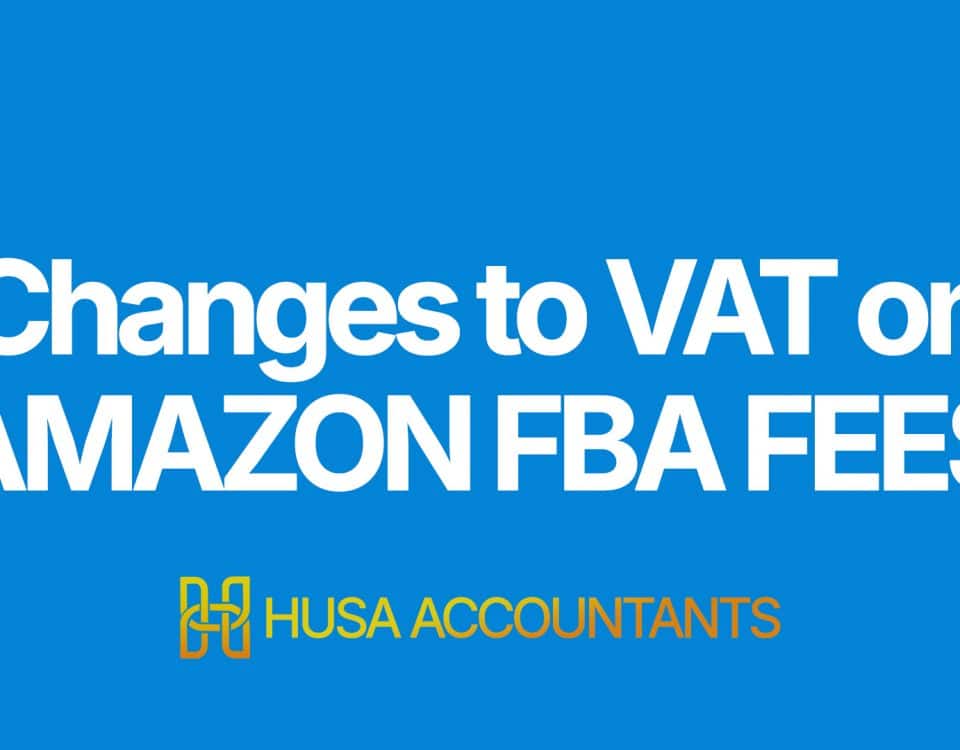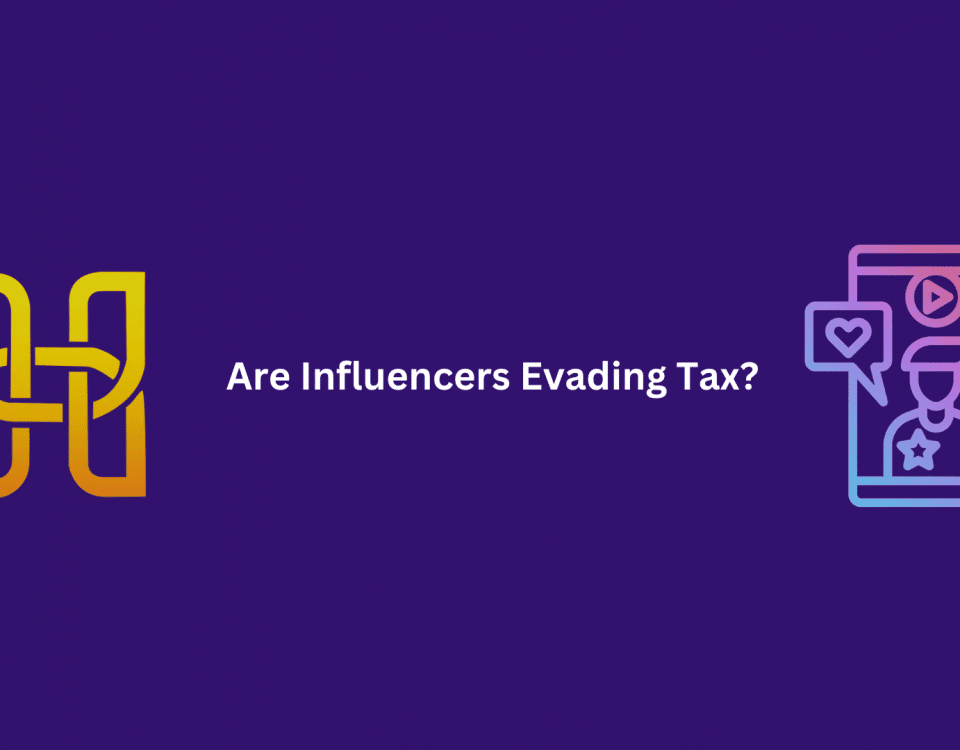Many SMEs I come across seem afraid of registering for VAT and, to be blunt, this is usually because they don’t properly understand how VAT works. The idea is that once your taxable turnover exceeds £85,000 in any 12 month period, you need to register for VAT. However, being VAT registered is definitely not a bad thing; it’s just extra work.
Value Added Tax is generally a good thing. It isn’t really “dodged” as such, because ultimately it is the end-customer who is charged an extra 20%. The average joe isn’t concerned about living a VAT-free lifestyle, and since many businesses benefit from reclaiming VAT paid on expenses, they are mostly happy to self-report it honestly. As a result, VAT contributes billions towards keeping society afloat.
It goes without saying then, that disaggregation – splitting a business to postpone (or avoid) crossing the VAT threshold - is a touchy topic. Unfortunately, some big businesses really stretch the rules and get away with it.
VAT is different. It’s added on top of your sale price at the time of sale. You never really treat the VAT portion as income, you just collect it for the government. So technically this extra 20% is being paid by the end customer, not your business. The business just hold on to it for up to 3 months i.e. one VAT quarter.
You take home £100 in sales. Just like before.
You take in £20 VAT and set it aside for HMRC.
You hold on to the £20. You see the extra cash sitting in your bank account. “Wow, business is doing well!” you think to yourself. But remember it’s not your money. You’ll have to hand it over to HMRC once your VAT return is done and payment is due.
As a VAT registered business, you’re able to reclaim VAT you have paid on expenses from HMRC.
Let’s say you spent £60 on standard-rated products. You haven’t actually paid £60; you’ve paid £50 plus £10 of VAT. So when the time comes to submit your VAT return, you can deduct this £10 from the £20 you owe to HMRC. Boom - you just halved your VAT bill.
You would still have taken in £100 in income, but you’d have also paid the full £60 on expenses, leaving you with £40 leftover. So in this example, you’ve just bumped your profit up to £50 - a 25% increase.
Although having a turnover of £85,000 is a pretty good problem to have, VAT registration can be a nuisance for B2C businesses.
B2C businesses are often selling to consumers - “punters”, if you will - who cannot be VAT registered and therefore are unable to reclaim VAT. Whereas B2B businesses are often selling to other VAT-registered businesses, who can reclaim that extra 20% back from HMRC.
You’re both selling the same product, but your business is charging 20% more. And let’s be honest, your customer base - are likely to go with the cheaper option.
To keep prices competitive, your only option is to treat your normal sale price as VAT inclusive. But this means treating one-sixth of your usual income as VAT. Some businesses choose to do so, but for others it isn’t an option.
Charge more and lose customers, or take a 1/6th hit on your income? A tricky situation. But, there could be a way around this. Unsurprisingly, the clue is in the title of this article.
If you happen to offer a variety of products or services which are distinctly different, you may be able to avoid passing the VAT threshold by chopping up your business into smaller businesses that handle one product or service each.
Your annual revenue is now split up between these separate businesses. Each business operates under the VAT registration threshold. No need to register.
HMRC are more likely to take the view that two businesses are separate if both have their own separate bank accounts. They should be separately registered with HMRC and submitting their own tax returns separately. You get the picture – “separate” is the key word! Ultimately, customers should feel that they are dealing with two unique businesses.
Note: you are selling a product.
You want to bring in more money. You decide to choose between two options:
Option 1:
You mainly promote yourself via Instagram, but it isn’t doing so great as many of the dogs turn up looking a bit scruffy. To combat this, you decide to offer dog grooming as an additional service.
Note: Now you are selling a service and a product.
Turns out you’re pretty good at dog grooming; the dogs look great. You become an Instagram sensation overnight; both the ties and the grooming service are selling like hot cakes.
You no longer have the time to concentrate on DogTies.com. So you bring in your younger sibling to take over the running of that business. You are not impressed however with their surly customer service on social and how it might affect your new core customers. Nothing here would stop you then choosing to separate the product and service into two separate businesses. After all, the product is separate from the service.
Option 2:
Your ties are designed for small doggos, but it turns out that they also fit regular-sized cattos. Bonus! You decide to branch out into selling ties for cats. CatTies.com is born.
People go wild for the cat ties too. You’re topping the charts on the #catsofinstagram hashtag daily. All over the country, people are dressing their cats like corporate hotshots and you’re taking a cut.
Uh-Oh: You are still only selling one product.
Sorry to spoil the fun, but if you decided to treat this as a separate business, you could get yourself into big trouble. Both businesses are using the same stock and providing essentially the same product.
In short, penalties and/or backdated tax are what you’re looking at here.
There are very specific and strict rules which are in place to ensure that any ‘business splitting’ is totally above-board. HMRC can (and will) treat separated businesses as one legal entity, but first they must be able to prove that businesses have “financial, economic and organisational links.” However, I prefer to drop the “and”. Ideally, you want to make sure there is no financial, economic or organisational link between your businesses. If you can’t provide evidence to disprove the existence of these links, well…
How far can they go back? A whopping twenty years. That’s right; two-zero; twenty.
The businesses cannot have the same bank account.
They cannot depend on one another financially.
There can be no common business profit or other financial interest that benefits both businesses.
Economic:
The businesses cannot share equipment.
They cannot operate from the same offices/location.
They cannot share advertising or marketing.
Organisational links are a little more vague; for example if the two businesses had the exact same employees and/or managers, do you think HMRC would consider them to be operating as one business?
Value Added Tax is generally a good thing. It isn’t really “dodged” as such, because ultimately it is the end-customer who is charged an extra 20%. The average joe isn’t concerned about living a VAT-free lifestyle, and since many businesses benefit from reclaiming VAT paid on expenses, they are mostly happy to self-report it honestly. As a result, VAT contributes billions towards keeping society afloat.
It goes without saying then, that disaggregation – splitting a business to postpone (or avoid) crossing the VAT threshold - is a touchy topic. Unfortunately, some big businesses really stretch the rules and get away with it.
So why avoid it?
Well, I can’t start this article before making it clear that crossing the VAT threshold isn’t something you should always seek to avoid. For some businesses, it’s quite the opposite. So before we dive in, let’s have a little refresher on how the VAT system works.The Basics:
The other taxes you’ve become accustomed to - such as income tax or corporation tax - are deducted from your leftover profit. You’ve made your income, you’ve paid your expenses, and HMRC take a chunk out of what’s left at year-end.VAT is different. It’s added on top of your sale price at the time of sale. You never really treat the VAT portion as income, you just collect it for the government. So technically this extra 20% is being paid by the end customer, not your business. The business just hold on to it for up to 3 months i.e. one VAT quarter.
Example:
Let’s say that in you have a bad VAT quarter, and you make just one sale. You charge £100 for a copy of your latest DVD “The Art of Going Broke”. Business isn’t going so hot, but at least it makes for easy maths. You add VAT (currently 20%) on top of this £100.You hold on to the £20. You see the extra cash sitting in your bank account. “Wow, business is doing well!” you think to yourself. But remember it’s not your money. You’ll have to hand it over to HMRC once your VAT return is done and payment is due.
Is there an upside?
Yes.As a VAT registered business, you’re able to reclaim VAT you have paid on expenses from HMRC.
Let’s say you spent £60 on standard-rated products. You haven’t actually paid £60; you’ve paid £50 plus £10 of VAT. So when the time comes to submit your VAT return, you can deduct this £10 from the £20 you owe to HMRC. Boom - you just halved your VAT bill.
What’s the benefit?
Well here’s the thing - you wouldn’t have been able to reclaim that extra £10 if you hadn’t been VAT registered.You would still have taken in £100 in income, but you’d have also paid the full £60 on expenses, leaving you with £40 leftover. So in this example, you’ve just bumped your profit up to £50 - a 25% increase.
Why would I avoid VAT?
There are two types of business transactions – Business to Business (B2B) or Business to Consumer (B2C).Although having a turnover of £85,000 is a pretty good problem to have, VAT registration can be a nuisance for B2C businesses.
B2C businesses are often selling to consumers - “punters”, if you will - who cannot be VAT registered and therefore are unable to reclaim VAT. Whereas B2B businesses are often selling to other VAT-registered businesses, who can reclaim that extra 20% back from HMRC.
Example:
Imagine you had a competitor who was selling his DVD “Think & Grow Poor”, but wasn’t charging VAT.You’re both selling the same product, but your business is charging 20% more. And let’s be honest, your customer base - are likely to go with the cheaper option.
To keep prices competitive, your only option is to treat your normal sale price as VAT inclusive. But this means treating one-sixth of your usual income as VAT. Some businesses choose to do so, but for others it isn’t an option.
Charge more and lose customers, or take a 1/6th hit on your income? A tricky situation. But, there could be a way around this. Unsurprisingly, the clue is in the title of this article.
Disaggregation: Splitting Your Business
Let’s imagine your business is about to hit the VAT threshold.If you happen to offer a variety of products or services which are distinctly different, you may be able to avoid passing the VAT threshold by chopping up your business into smaller businesses that handle one product or service each.
Your annual revenue is now split up between these separate businesses. Each business operates under the VAT registration threshold. No need to register.
HMRC are more likely to take the view that two businesses are separate if both have their own separate bank accounts. They should be separately registered with HMRC and submitting their own tax returns separately. You get the picture – “separate” is the key word! Ultimately, customers should feel that they are dealing with two unique businesses.
Example:
I have a mini daschund puppy and I recently bought him an office style shirt-&-tie collar. Let’s say you decided to set up a business selling ties for small dogs – we’ll call it DogTies.com.Note: you are selling a product.
You want to bring in more money. You decide to choose between two options:
Option 1:
You mainly promote yourself via Instagram, but it isn’t doing so great as many of the dogs turn up looking a bit scruffy. To combat this, you decide to offer dog grooming as an additional service.
Note: Now you are selling a service and a product.
Turns out you’re pretty good at dog grooming; the dogs look great. You become an Instagram sensation overnight; both the ties and the grooming service are selling like hot cakes.
You no longer have the time to concentrate on DogTies.com. So you bring in your younger sibling to take over the running of that business. You are not impressed however with their surly customer service on social and how it might affect your new core customers. Nothing here would stop you then choosing to separate the product and service into two separate businesses. After all, the product is separate from the service.
Option 2:
Your ties are designed for small doggos, but it turns out that they also fit regular-sized cattos. Bonus! You decide to branch out into selling ties for cats. CatTies.com is born.
People go wild for the cat ties too. You’re topping the charts on the #catsofinstagram hashtag daily. All over the country, people are dressing their cats like corporate hotshots and you’re taking a cut.
Uh-Oh: You are still only selling one product.
Sorry to spoil the fun, but if you decided to treat this as a separate business, you could get yourself into big trouble. Both businesses are using the same stock and providing essentially the same product.
What could go wrong?
While there are 100% legitimate reasons for splitting your business, be warned - HMRC believes this practice qualifies as tax avoidance. Two words that aren’t thrown around lightly.In short, penalties and/or backdated tax are what you’re looking at here.
There are very specific and strict rules which are in place to ensure that any ‘business splitting’ is totally above-board. HMRC can (and will) treat separated businesses as one legal entity, but first they must be able to prove that businesses have “financial, economic and organisational links.” However, I prefer to drop the “and”. Ideally, you want to make sure there is no financial, economic or organisational link between your businesses. If you can’t provide evidence to disprove the existence of these links, well…
The “Good” outcome:
If you are lucky HMRC might take the view that these businesses will need to register for VAT as one entity moving forward.The bad outcome:
But if HMRC decide that your businesses www.DogTies.com and www.CatTies.com were never really two separate businesses, they can treat your case as a late registration, and ask you to pay over tax due from the date that your combined business profits breached the VAT threshold.How far can they go back? A whopping twenty years. That’s right; two-zero; twenty.
So what counts as a link?
There are some textbook examples which HMRC look for to decide whether businesses are related or not:Financially:
Economic:
Organisational links are a little more vague; for example if the two businesses had the exact same employees and/or managers, do you think HMRC would consider them to be operating as one business?




